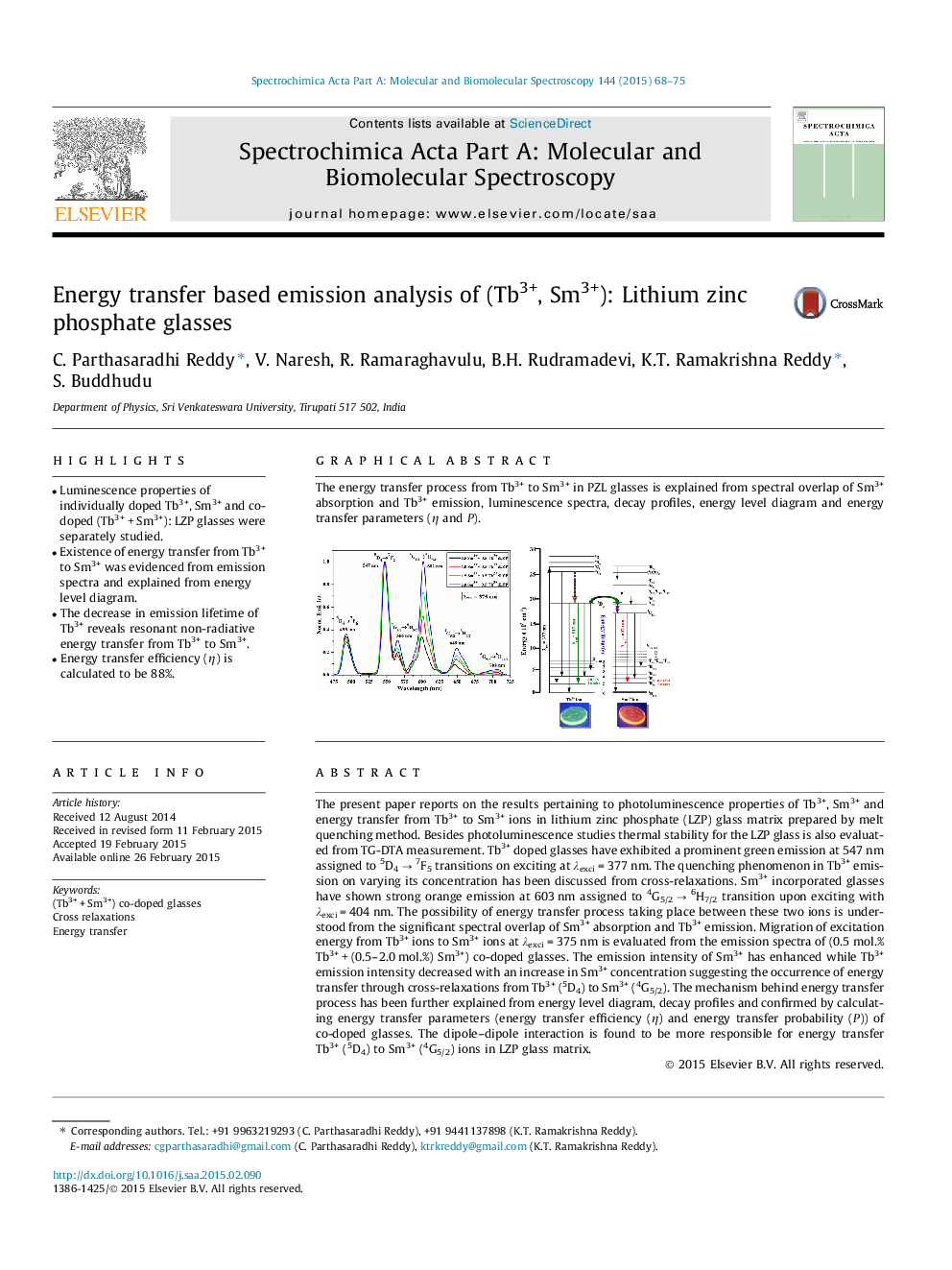| کد مقاله | کد نشریه | سال انتشار | مقاله انگلیسی | نسخه تمام متن |
|---|---|---|---|---|
| 1228878 | 1495225 | 2015 | 8 صفحه PDF | دانلود رایگان |

• Luminescence properties of individually doped Tb3+, Sm3+ and co-doped (Tb3+ + Sm3+): LZP glasses were separately studied.
• Existence of energy transfer from Tb3+ to Sm3+ was evidenced from emission spectra and explained from energy level diagram.
• The decrease in emission lifetime of Tb3+ reveals resonant non-radiative energy transfer from Tb3+ to Sm3+.
• Energy transfer efficiency (η) is calculated to be 88%.
The present paper reports on the results pertaining to photoluminescence properties of Tb3+, Sm3+ and energy transfer from Tb3+ to Sm3+ ions in lithium zinc phosphate (LZP) glass matrix prepared by melt quenching method. Besides photoluminescence studies thermal stability for the LZP glass is also evaluated from TG-DTA measurement. Tb3+ doped glasses have exhibited a prominent green emission at 547 nm assigned to 5D4 → 7F5 transitions on exciting at λexci = 377 nm. The quenching phenomenon in Tb3+ emission on varying its concentration has been discussed from cross-relaxations. Sm3+ incorporated glasses have shown strong orange emission at 603 nm assigned to 4G5/2 → 6H7/2 transition upon exciting with λexci = 404 nm. The possibility of energy transfer process taking place between these two ions is understood from the significant spectral overlap of Sm3+ absorption and Tb3+ emission. Migration of excitation energy from Tb3+ ions to Sm3+ ions at λexci = 375 nm is evaluated from the emission spectra of (0.5 mol.% Tb3+ + (0.5–2.0 mol.%) Sm3+) co-doped glasses. The emission intensity of Sm3+ has enhanced while Tb3+ emission intensity decreased with an increase in Sm3+ concentration suggesting the occurrence of energy transfer through cross-relaxations from Tb3+ (5D4) to Sm3+ (4G5/2). The mechanism behind energy transfer process has been further explained from energy level diagram, decay profiles and confirmed by calculating energy transfer parameters (energy transfer efficiency (η) and energy transfer probability (P)) of co-doped glasses. The dipole–dipole interaction is found to be more responsible for energy transfer Tb3+ (5D4) to Sm3+ (4G5/2) ions in LZP glass matrix.
The energy transfer process from Tb3+ to Sm3+ in PZL glasses is explained from spectral overlap of Sm3+ absorption and Tb3+ emission, luminescence spectra, decay profiles, energy level diagram and energy transfer parameters (η and P).Figure optionsDownload as PowerPoint slide
Journal: Spectrochimica Acta Part A: Molecular and Biomolecular Spectroscopy - Volume 144, 5 June 2015, Pages 68–75